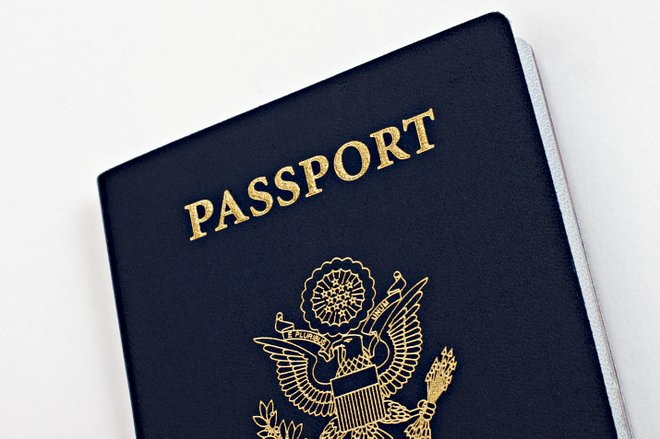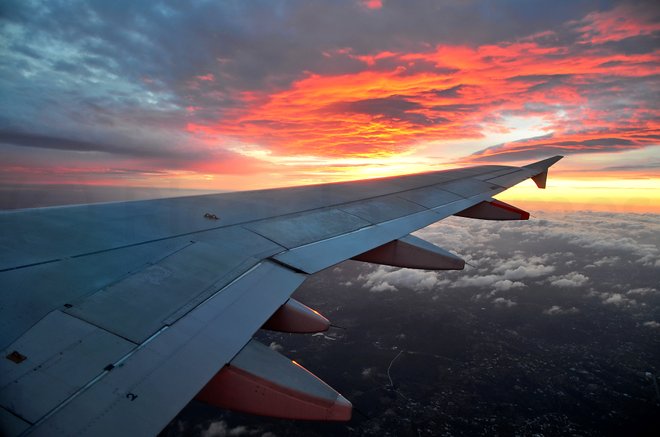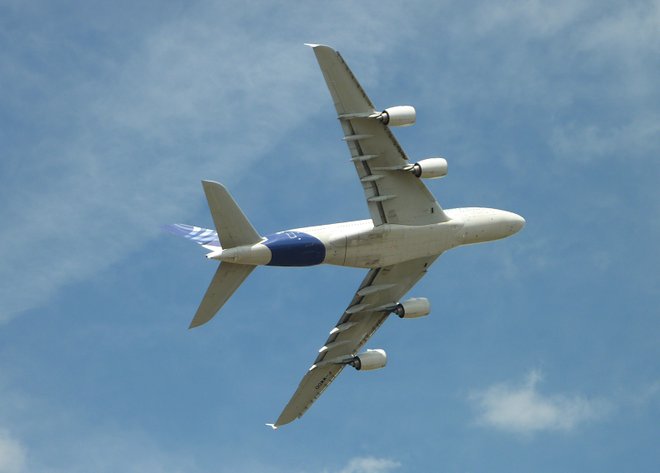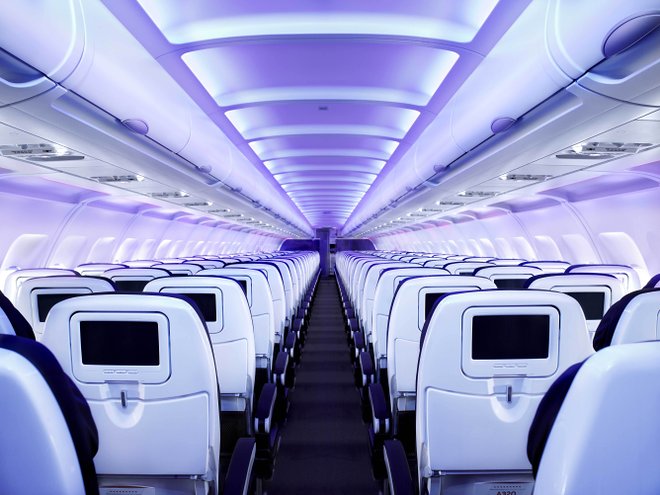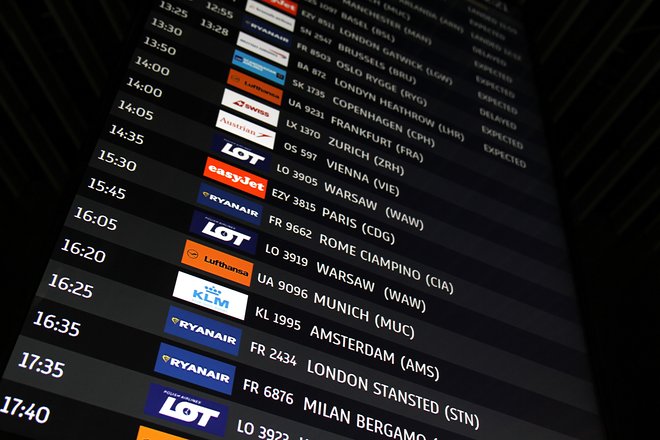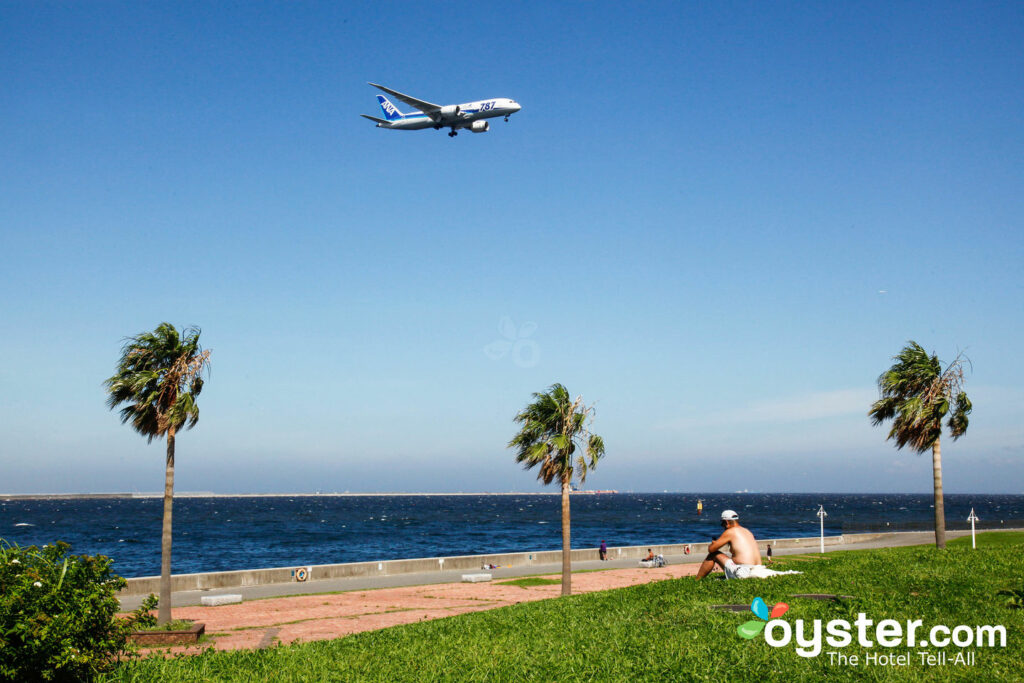
Boarding an airplane for the first time can be an emotional experience. From total excitement to full-body terror -- and often a mix of the two -- even the most serious travel junkie can have strong feelings about flying. But since everyone has a first time -- and your first time flying can be filled with questions about how to book a flight, whether you should check your luggage, and how connecting flights work -- we've put together this in-depth list of every tip, trick, and unknown that you're likely to encounter. Read on for our advice on how to ace your first flight like a pro.
1. Being nervous is normal.
Here’s an insider secret from those of us who fly all the time: We still get nervous in the air. There’s nothing we can tell you that will keep you from becoming anxious, but we have some tricks that might help. First off, do not research airplane horror stories in online forums ahead of time. You’re not doing yourself any favors by seeking out the mishaps that can occur while flying. Instead, work on some calming strategies like deep breathing. We suggest apps like Breathe2Relax, which can help regulate this. Curated playlists and engaging reading material can help as well. If all else fails, there are both over-the-counter and prescription medications that can help you manage extreme cases of anxiety.
2. There will be turbulence, but that's actually a good thing.
For many fliers, turbulence can be nerve-wracking. It’s almost statistically impossible for a plane not to encounter turbulence, and you should be prepared for it. If you want to know every single in and out of turbulence, consult our in-depth report on it here. But if you’re not in the mood for all of that, just know that planes are built to withstand far more shaking than you think. And even if turbulence makes you panic, it can actually be a good thing. That shaking is very often a signal that the plane’s computers and pilots must adjust things like speed and course to avert danger, getting millions of people from point A to point B safely every year.
3. Show up to the airport at the recommended times.
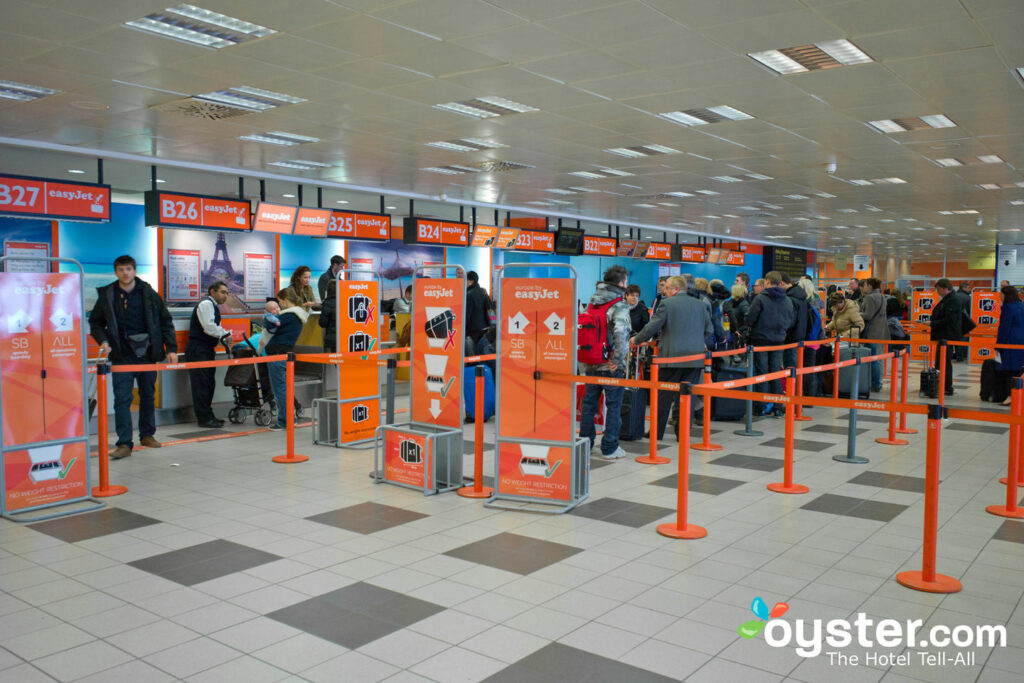
While some people stroll up to the airport 30 minutes before their plane’s departure, you should adhere to the recommended arrival times that airlines provide. As a refresher, that’s 60 minutes if you’ve checked into a domestic flight online and aren’t checking bags; 90 minutes for domestic flights in which you are checking baggage; and two hours for international travelers departing from their home country. If you’re returning home from a foreign country, allow yourself three hours in case of any holdups at border control. Lines for security at the busiest airports in the United States and Europe can be horrible. In the U.S., you can expect the longest security lines at LAX, all New York City area airports, Dallas/Fort Worth, O’Hare, and Miami, according to a study conducted by Travel + Leisure.
4. Decide whether to bring a carry-on or check your luggage.
These days, it’s rare for domestic flights — and even some international flights — to allow passengers to check luggage for free. However, even if you aren’t bound by cost concerns, there are some practicalities to consider. Checking luggage offers the freedom to bring a wider range of clothing and necessities, which is always a comfort when far from home. This also lets you skirt the TSA rules on liquid sizes, so you can bring full-size hair products, body creams, and the like. On the other hand, you’ll have to endure bag-check lines upon arriving at the airport and wait for your luggage upon landing, which can be significant, especially after international journeys where you’ve already endured long border control queues. What’s more? Lost luggage is definitely a thing, and if yours can’t be located, you need receipts for the lost items if you expect to recoup any significant money.
5. Know the rules for security lines ahead of time.
There are tons of rules to follow at airport security lines. For starters, travelers almost everywhere can only carry on one clear, quart-sized plastic zip-top bag worth of liquids, all of which must be in bottles that don’t exceed 3.4 ounces (100 milliliters). You cannot bring multiple one-quart bags. You will also need to remove electronics that are larger than a cell phone from your carry-on bags. If you’re in the U.S., you’ll also have to take off your shoes and jackets. Removing belts and watches is a smart idea, and make sure everything is out of your pockets. If you have TSA PreCheck or Global Entry, the rules are more lax — you can keep your shoes on and leave laptops in your bags.
6. Enter your name exactly as it appears on your ID or passport.
This may sound like a no-brainer, but if the names on your ticket and passport or government-issued ID don’t match, you’re going to have a problem. When you purchase your ticket online, make sure you are entering it exactly as it’s written on the document you will be using to travel. Additionally, if you’ve purchased security clearance programs like TSA PreCheck or Global Entry, make sure to enter your known traveler number at the time of booking. Otherwise, you may be forbidden from using those expedited lines upon arriving at the airport.
7. Free in-flight food is rare.
Once upon a time, anyone stepping onto an airplane could expect a variety of services and perks, including in-flight meals. That’s a thing of the past. If you’re flying domestically, you aren’t going to get a free meal in economy class. Most airlines provide one round of free snacks and non-alcoholic beverages, though budget airlines like Spirit, Allegiant, and Frontier do not. International long-haul flights generally include a round of snacks, alcoholic beverages, and at least one meal, though again, if you’re flying a budget airline (like Norwegian, AirAsia, or Interjet) or have chosen an economy fare on a non-budget carrier, you can expect to shell out for food and beverages. That being said, it’s best to bring plenty of snacks and water regardless.
8. Some noises might be alarming, but they're normal.
An airplane is a machine — an incredibly complex and intricate machine — and as such, it’s going to make some noise. The loudest and most surprising sound will likely be the landing gear. The wheels of the plane are retracted after takeoff, and deployed in advance of landing. This will sound like an abrupt thud and include some loud whirring. You may also hear a fast, zipping sound, like a metal cord being reeled in, which is how the pilot is readying the wings for takeoff. Once you’re in the air, you might notice a distinct change in the sounds coming from the engines. It will likely go from incredibly loud to quieter once you’re at cruising altitude. This may seem alarming — and you might think the engines are failing — but that’s not the case. Airplanes need far less thrust to stay aloft than they do to get to 35,000 feet when competing with a number of atmospheric and gravitational forces.
9. Know your susceptibility to motion sickness.
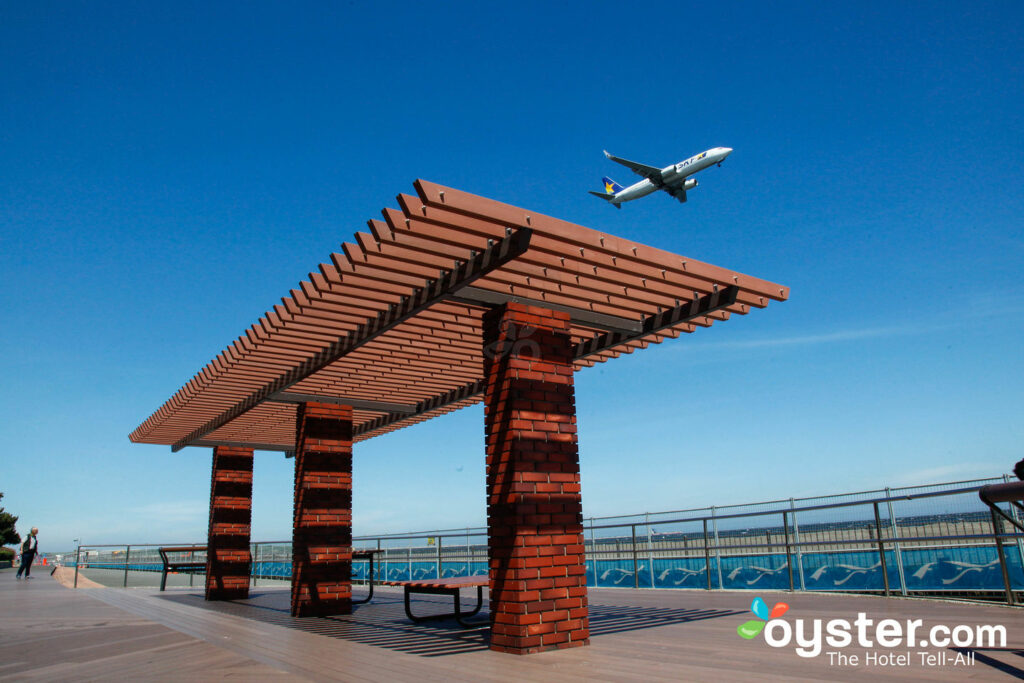
Motion sickness isn’t a universal affliction, and people who experience it during one form of transit — like boats or cars — won’t necessarily feel it across all types of transportation. The sensation of flying isn’t the same as being in a boat or in a car on a twisting, turning road, but there are air-sickness bags in the seat pockets of every flight for a reason: Some people can’t handle it. With that in mind, you should come armed with motion sickness pills like Dramamine, which also have sedative effects. Seats at the back of a plane do pick up more motion than those at the front, so you may want to choose a lower-numbered row or a seat near the bathroom.
10. Carry-on luggage sizes and rules vary by airline.
You might think that the bag you bought — supposedly approved by the TSA as a carry-on — will be usable on every airline. Sadly, that’s not the case. Each airline has a different set of sizes that they allow for carry-ons. This is compounded by the fact that each airline also sets different weight limits for those carry-ons. Keep in mind that your personal item — your backpack or purse, usually — is often included in the total weight you are allowed to carry on. If your carry-on and personal item are overweight, expect to pay extra. Even if you make it through check-in with your carry-on, there’s a chance you may be asked to check it at the gate, depending on flight capacity.
11. You should get up and move around during your flight.
Sitting idly in a cramped airplane seat for hours on end can be hazardous to your health. That’s especially true for travelers who have vascular conditions. Regardless of your physical health, though, you should make an effort to get up and move around to avoid a condition known as deep vein thrombosis. These are potentially deadly blood clots that can form from remaining motionless in cramped positions for extended periods of time. There’s no hard and fast rule on how often you should stretch and move around, but every two hours is a safe bet. Of course, thousands of people sleep for the entire duration of their 12-hour flight and still never experience any issues. But trust us, allowing your muscles to stretch throughout a flight will help you recover once you’re back on the ground.
12. Consider paying for the seat you want when booking.
These days, airlines are trying to maximize profits at every turn. That includes once-standard services like choosing your own seat. Most budget and even major domestic carriers now charge a fee if you want to select your preferred seat. If you’re flying for the first time, a window seat can be very cool, as you’ll get a bird’s-eye view of the world. Alternatively, an aisle seat gives you the freedom to get up and use the restroom or stretch as often as you’d like. Shelling out cash to select your seat also prevents you from being stuck in the dreaded middle seat.
13. You can only lock your luggage with TSA-approved locks.
Many people logically want to protect their belongings by locking their luggage. However, airport security is legally required to have access to your bags, so that they can inspect them for illegal devices and goods. If you want to lock your luggage, you must purchase a TSA-approved lock, like this one by TUMI. These allow agents to use a master key to open your luggage and inspect it after it has been checked and screened. They also prevent amateur thieves from being able to easily open your bag. If you use a lock that’s not TSA-approved, you run the risk of having your luggage cut open and dissected, or worse.
14. Do not say the words "bomb," "gun," or anything like that.
This may sound like common sense, but you need to be smart about the things you say in airports and on airplanes. In this day and age, authorities are on high alert at all times, and that means having their ears perked for conversations that may seem mundane to you. Uttering words pertaining to incendiary devices, weapons, and the like can have consequences that will likely result in you being pulled aside for questioning, and possibly missing your flight. Certain speech and behaviors — particularly if you’re intoxicated — are enough for airline workers to prohibit you from boarding.
15. Invest in noise-canceling headphones, earplugs, or eye masks.
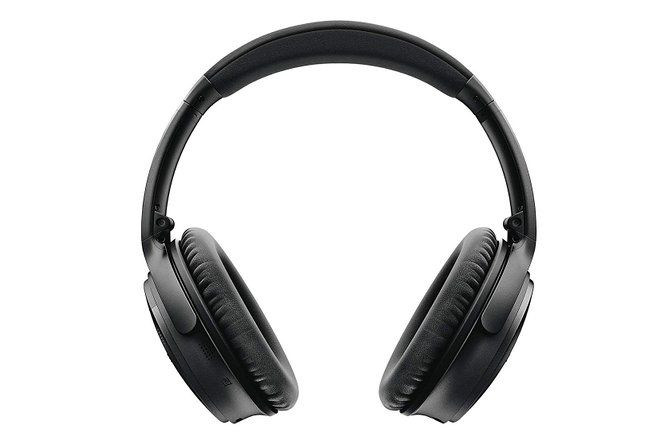
In addition to the noises the airplane itself makes, your fellow passengers provide a fun festival of sounds. This can range from crying children to drink and meal services. If you’re traveling on a red-eye or long-haul flight, and are hoping to get some sleep, you’ll likely need something to block out the noise. We recommend investing in a set of noise-canceling headphones and a white-noise app, or a good pair of earplugs. These can range from simple earbuds by Sony to high-end options like these Bose noise-canceling wireless headphones. Additionally, even when the plane goes dark, your neighbor has every right to turn on their overhead reading light. With that in mind, you’ll need to block the light from your eyes. Some flights provide their own cheap eye masks, but since that’s becoming more and more rare, we suggest springing for one of your own.
16. You're not entitled to unlimited drinks on flights.
If you’re in a bar on land and you’ve had one too many, the bartender has a legal obligation to cut you off. Flight attendants are likewise allowed to refuse service if they suspect a passenger is becoming intoxicated. This is for the safety of everyone on the flight, including yourself. Plus, due to the changes in your body wrought by altitude and cabin pressure, you’re likely to become dehydrated far more quickly than on land, meaning the effects of intoxication are more extreme.
17. Dress comfortably and pack your carry-on intelligently.
It’s rare for an airline to have truly dreamlike seats outside of business and first classes. Additionally, with everything from climate control to the slight swelling everyone undergoes in the air — as well as the fact that you’re going to be asked to partially disrobe at security — you should opt for comfy, easy-to-manage clothes (think pants made from soft, stretchable material and breathable fabrics; layers in case the plane is too hot or too cold; and shoes that you can easily slide on and off). When you’re packing your carry-on, also make sure that you’ve placed liquids, food, medications, and electronics at the top of your bag where they are easiest to remove and replace if needed or asked.
18. Your plane will make steeply banked turns.
Airplanes don’t travel in a straight line. Flight patterns in and out of airports often demand that pilots circle the destination below one, two, or more times as they descend in order to ease landing and keep enough space between arriving and departing flights. In order to execute this maneuver, the plane is going to tilt sharply, which often alarms passengers, whether they are seasoned or on their first flight. Rest assured, the plane is not falling out of the sky, but is executing movements for which it was engineered.
19. You can score bargain airfares, except during Christmas and New Years.
If you look for tickets far enough in advance (or set flight price alerts on various travel search engines), you are likely going to be able to find reasonable fares for peak times of the year, including summer, holiday weekends, and spring break. That’s especially true if you’re willing to fly on budget airlines. The exceptions to this rule are Christmas and New Years, when even the most intrepid travel expert will be hard-pressed to find cheap flights to nearly any destination. In the United States, Thanksgiving is always more expensive than other times of year, though you can score bargains on outbound flights to foreign destinations from the U.S. for that week.
20. In-flight entertainment isn't guaranteed.
The difference between budget and legacy carriers is also quite stark when it comes to in-flight entertainment. If you’re traveling on an airline like Spirit, Interjet, or RyanAir, you should not expect any in-flight entertainment options. That’s also true on many domestic carriers in the United States. Many of those airlines, like American Airlines, are turning to branded apps on your phone or tablet, allowing you to use in-flight Wi-Fi to stream entertainment. Most long-haul international flights will have in-seat entertainment options, though quality varies. You shouldn’t expect access to in-seat USB charging ports on every flight either. Availability is usually indicated when you see a small lightning bolt next to the flight when booking. In any case, you should always come prepared with backup battery pack.
21. Air travel can be a cramped affair that demands patience.
More and more, airlines are devoting space to premium classes — and those who pay three or four times more than everyone else reap the numerous perks. On long-haul flights, these classes have floor plans that are arranged so you don’t have to crawl over your fellow passengers to reach the restroom. For the rest of us, each row is comprised of window, aisle, and middle seats. Quarters in the economy classes are cramped, and everyone needs to exercise some patience. If you’re along the aisle, you’ll need to get up occasionally to allow those sitting next to you to access to the aisle and bathrooms. If you’re in middle or window seats, simply offer a polite “excuse me” to get out. If the person is sleeping, you are within your rights to wake them, and most travelers are understanding of this airborne fact of life.
22. If traveling internationally, you'll visit border control before getting your luggage.
Whether you’re traveling abroad or returning home from an international vacation, you’ll be visiting border control when you land. Depending on where that is and your citizenship, you may have to fill out customs forms that are usually passed out on the flight. Upon leaving the plane, follow the signs to border control. If you’ve arrived at your final destination, you’ll only be able to pick up your luggage once you’ve gone through this process. If you’re connecting to one international destination through another, you’ll have to undergo a second security screening at the connecting airport, but will go through customs in your final destination. Keep in mind that if your connecting airport is within the U.S. from an international departure point, you will have to clear customs in the first airport you reach in the U.S. In these cases, you’ll have to retrieve your checked bags and recheck them, as well as face a second security screening.
23. Short layovers versus long layovers — which is better?
One question we often hear is “How much time do I need between connecting flights?” The answer is complicated. If you’re flying on the same airline for the duration of your trip, layovers can technically be as short as 50 minutes. Keep in mind that airlines are on the hook to get you to your destination, and missing your connection (if your second flight is also operated by the same airline) costs them an exorbitant amount of money. However, the short layover is stressful, particularly if you’re connecting through airports like Heathrow, JFK, and LAX, where security is intense. If you have a short layover and are flying on two different airlines, or have found a fare that requires changing airports, you should think twice before booking. On the other end of the spectrum, long layovers in airports can be expensive as you’re beholden to food and drink prices in the terminal. That being said, layovers of 8 to 12 hours will often give you a chance to see the city in which you’re stopped in (always check visa requirements first).
24. Be aware of identification, visa, and passport rules.
It wasn’t so long ago that Americans could visit Canada or Mexico without a passport, but that now feels like a distant memory. Currently, the United States requires driver’s licenses to obey the Real ID Act, and most (but not all) U.S. states are compliant. However, if you have an old driver’s license, you need to check whether it was issued when your state started using the Real ID compliant formats. Additionally, if you’re traveling abroad, you need to account for how long it takes to get a passport (budget at least six weeks for this process and look into all of the documentation needed to secure one in advance). You should also check the visa requirements for the country or countries that you’re visiting, as these can take a long time to be issued. If you don’t have the appropriate visa upon landing, you could be deported at your own expense.
25. If you want to sit with your travel partners, purchase your tickets together.
There’s a bit of a catch 22 when it comes to booking flights. You’ll often see cheaper fares when searching for one passenger versus two people or more. If your ultimate goal is to save money and you don’t care about sitting together, book separately. However, if you’re hoping to have side-by-side seats, you must book your flights as one purchase. Doing so means you’re far more likely to be placed together. For groups of more than two, this won’t always be the case, and couples are sometimes placed across the aisle from one another. In addition to booking your seats as a single purchase, you should book as early as possible, and potentially also shell out extra money to select your seats. If you’re planning on sweet-talking the airline crew on the ground, you’re often going to be out of luck.
You’ll Also Like:
- 8 Easy Ways to Score a Cheap Flight
- The Worst Mistakes We’ve Made When Flying
- 7 Flying Tips for Plus-Size Travelers
All products are independently selected by our writers and editors. If you buy something through our links, Oyster may earn an affiliate commission.
